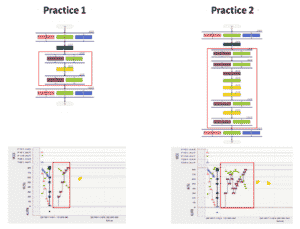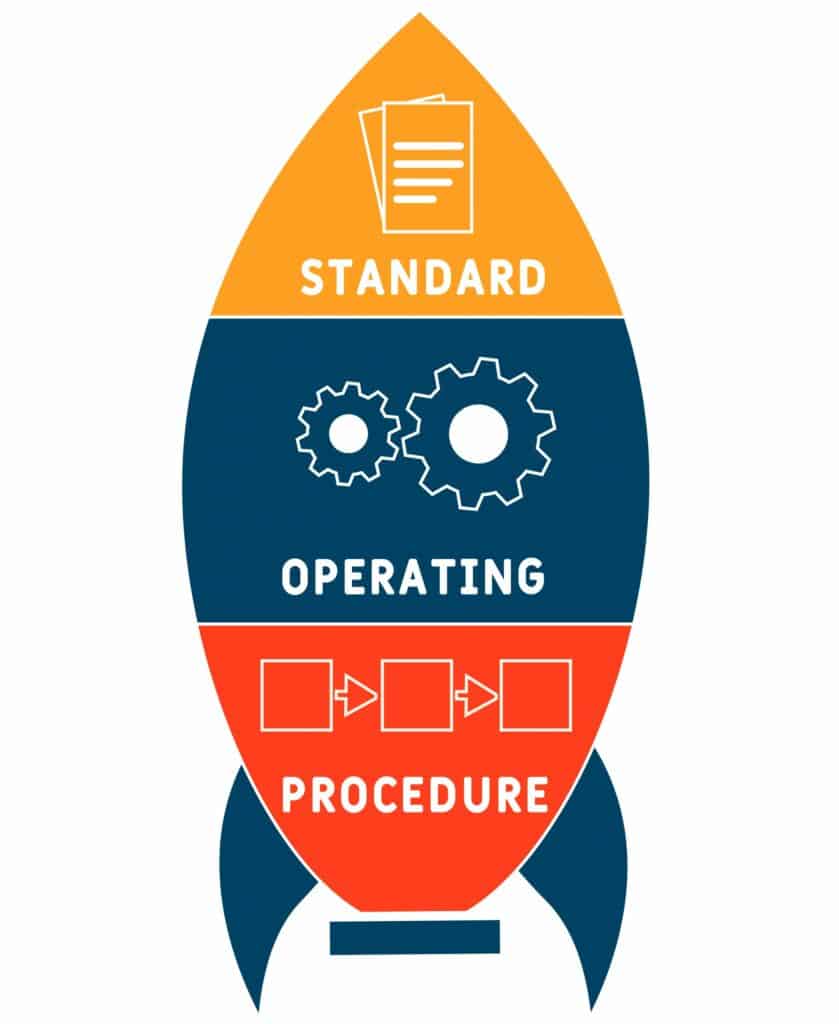Standard operating procedures (SOP) play a major role in regulated organisations, such as those in the pharmaceutical or food industries. The high quality requirements in these industries draw on national and international rules and standards that ensure production processes are compliant with good manufacturing practice (GMP). One central element of GMP is a binding description of work processes with checking and documentation of the results. As the processes have a high degree of relevance to the environment and to health and safety, the amount of SOPs in the above industries is correspondingly high. But these are not the only industries in which standardised procedures are documented. They also help employees in many other branches of industry to execute repeated process operations at the same high level of quality.
So it’s no wonder that SOP management has become a focal point of Industry 4.0. In most cases, its purpose is to digitalise and automate the workflow, from creation to training and auditing. This is complemented by multimedia elements ranging from simple images to augmented reality, which support understanding of SOPs. As there may be a large number of SOPs and because management is usually paper-based, digitalisation makes work processes considerably easier.
Keeping SOPs up to date
But isn’t there more that can be done in this area? After all, digitalisation of SOPs themselves is a topic of debate. Let’s take a typical production process. The task of starting up and shutting down production processes is a complex operation, in which the plant operator needs to keep a lot of things in mind and may need to make some manual interventions. In the optimal scenario, the necessary sequence of steps should always be performed on the basis of corresponding SOPs.
Once this basic requirement has been met, it stands to reason that the sequence of steps should be automated. In this context, the key concept is interactive assistance systems. A system of this type gives the plant operator clear operating instructions, or the system itself implements the steps in an automated process if possible. Great, but let’s be honest: How complete and precise are SOPs usually?
Particularly in production processes, the experience of plant operators is extremely important. They have a feel for the plant and can contribute their experience to operations. Some things are still completely unknown when an SOP is written, or work better when done in a different way or adjusted at a later point. And before you know it, the SOP is out of date and at worst may be put away in a drawer. The stupid thing is that all this valuable experience is implicit knowledge that is only documented in rudimentary fashion – if it is documented at all. Bundling and documenting this knowledge and integrating it into an SOP involves a huge amount of work. And then even the most experienced plant operator will head into retirement.
Comparison with reality
The good thing is that the implicit knowledge is stored in the event data of the DCS, which saves each of the plant operator’s individual interventions in digital logbooks where available. This data can be prepared and visualised – implicit knowledge becomes explicit and open to analysis, and different operating methods can be compared. It is obviously extremely helpful if the event data itself is available in structured form – albeit in chronological order with no direct reference to the plant operator’s intentions.
For this reason, individual events need to be assigned to operations, parallel connections need to be identified and the operations brought into chronological order. Depending on the complexity of the tasks and the number of repetitions of the process under consideration, a rather confusing number of patterns can emerge. In this case, cluster algorithms can help to give an overview of the chaos and clarify the different strategies of plant operators.
But the event data and process models for operations (procedures) alone do not help to answer every question in full, since many actions taken by the plant operators are responses to specific operating conditions. And they identify these from the process data. So to make implicit knowledge fully transparent, the different procedures must be correlated with the process data and be converted into comprehensible “if-then” relationships.
As is normally the case with data analysis, an analysis of this type requires in-depth collaboration between the analysts and the process owners, as they are the only ones able to evaluate the results of the analysis and identify which procedure is the most suitable in addition to key statistics. Once this has been found, the plant operators’ implicit knowledge is integrated directly into the SOP and the assistance system can come into being.

Safeguarding implicit knowledge
The example described above demonstrates the potential of data analysis and digitalisation in a field that may at first glance not appear relevant. As long as enough data is available, i.e. processes are tracked digitally, it is possible to perform an analysis of this type and make a comparison with existing SOPs. Of course, it is not necessarily possible to automate everything. But the most important aspect in this regard is to safeguard the experience of people who work with the SOP. Implicit knowledge is an asset that is not easy to collect but is extremely valuable. If you find this example interesting, you will find further valuable information in the corresponding white paper.




